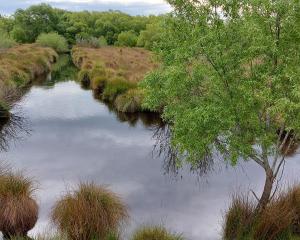Sara Keen finds a New Zealand connection to Shipton's Arch in west China.
New Zealand can thank Eric Shipton, the famous British mountaineer, for paving the way for the first successful climb of Mt Everest by Ed Hillary and Tensing Norgay.
Prior to World War 2, Shipton made four attempts to climb Everest from the northern side, including getting within 300m of the top.
In 1951 he felt there might be a route from the south and, after leading a reconnaissance team, which included Ed Hillary, saw a possible route.
Shipton then led another reconnaissance, this time on Everest itself.
They climbed above the notoriously difficult Khumbu Icefall and confirmed this potential route.
Shipton was expected to be appointed leader of the 1953 British Everest Expedition but instead John Hunt was given the job.
This huge expedition comprised 400 people, including porters and Sherpa guides, as well as 4.5 tonnes of gear.
This upset Shipton as he disliked large expeditions and felt that mountaineering was becoming too competitive.
He told this to the Joint Himalayan Committee (who funded and organised Everest expeditions then), hence John Hunt's appointment.
We touched base with Eric Shipton while on a visit to Kashgar in far west China.
We had a few days there before heading overland into Kyrgyzstan and had planned to do a day trip to a must-see lake off the Karakoram Highway.
It never happened.
While booking a car and driver at a travel agency, we saw a picture of a huge arch, Shipton's Arch, and we just had to go.
Early next day, in a 4WD with a driver and guide (Kasim), we were on our way for the one-hour drive to a turn-off on to a dry riverbed - the usual route to the start of the track.
Soon our way was barred, so we turned around and headed to a new road that had been noticed but ignored as neither the driver nor the guide had seen it before.
This road climbed high into the Tushuk Tash Mountains ending at a car park.
We then drove on to the riverbed, before heading up a 2km narrow gorge to the start of the track.
At the car park we were approached by a man whom Kasim said was the [unofficial] Keeper of the Ladders and we must pay him $US5 each to use them.
No payment, no use of the ladders, we were warned, so we paid up.
It took an hour to climb these essential ladders, squeeze through tightish spots and walk up narrow gorges, all the time surrounded by amazing, jagged mountains.
Further up we crossed a small area of snow which didn't present any problems and, in fact, it just added to the enjoyment of the walk.
Our excitement was raised about now when we got our first glimpse of the arch.
We were now approaching 3000m so the last steep pinch up a hill in front of the arch took a little longer than expected, but the altitude was soon forgotten as we marvelled at this wonderful sight.
This enormous arch towered over us with a vertical drop on the other side.
It's impossible to see the base of the arch, which is at the bottom of an abyss, somewhere down below.
How had Shipton come to be here to name this arch?
During the war, Shipton was the British consul in Kashgar and had caught a glimpse of this arch from a high road, but had no opportunity to search for it then.
Back in Kashgar in 1947, (this time as consul-general), Eric and his wife Diana, made three attempts to find the arch from the south, failing each time.
He described the going with phrases including ''a labyrinth of gorges'', ''like plunging into a maze'', and ''a tortured terrain''.
Their way was barred whichever way they went.
They eventually succeeded from the north, which proved easy by comparison. Shipton estimated the arch to be at least 1000ft (305m) high.
After that, no-one much visited the arch again until 2000 when a National Geographic climbing team went in and both climbed and measured it.
They measured it with climbing ropes in a series of steps.
The measurement ended up a staggering 1500ft (457m).
It was, by far, the highest measured arch in the world.
We lingered in this fascinating spot for about half an hour, enjoying the majesty of the arch and its rugged surroundings.
We also enjoyed having the arch all to ourselves and we left just in time as we met several groups walking in.
Back at the vehicle, we headed to a nearby village for a late lunch and this proved an experience in itself.
The café owner demonstrated how he made his own hand-pulled noodles, by twisting and stretching the noodle dough over and over again, gathering them up and repeating the process until the noodles were the right thickness.
These noodles form the basis of a central Asian dish called lagman, which is also comprised of strips of lamb (or old mutton) in a stew of tomato, onion, garlic, green beans, carrot, chilli and dill.
The dish was delicious and we were to have many variations of this as we travelled further west.
A great way to end a great day.
Footnote: If you're interested in Eric Shipton, a biography, Everest and Beyond written by Peter Steele, is a good read.












